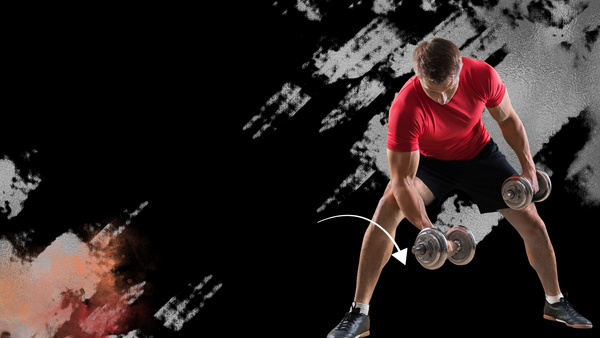Effective Workouts for Your Back to Build Strength
Transform your physique with targeted workouts for your back that build muscle, improve posture, and enhance core stability. Get expert-backed exercises for a stronger back today

Did you know that by 2050, an estimated 843 million people worldwide will struggle with back pain? This is a huge number that shows how important it is to do back exercises. They help keep you healthy and avoid pain.
Back workouts are not just a trend. They are key for building strength, better posture, and avoiding injuries. Exercises that focus on strength and mobility can greatly improve your physical health. They also lower the chance of long-term pain.
Whether you're an athlete or just want to move better every day, a good back routine can change your life. These exercises don't just help your back. They also improve balance, stability, and how your muscles work together.
Key Takeaways
- Back pain affects 619 million people globally in 2020
- Targeted back exercises can prevent and manage nonspecific back pain
- Strength training improves posture and spinal support
- Back workouts enhance overall body stability and performance
- Regular back exercises can reduce injury risks
Understanding Back Muscle Anatomy and Benefits
The human back is made up of many muscles. These muscles are key for upper body workouts and keeping us stable. Knowing about these muscles helps us train better for back strength and balance.
Back muscles are divided into three layers. Each layer has its own job in helping us move and stand up straight. Together, they give us stability, strength, and flexibility for different activities.
Main Muscle Groups of the Back
The main muscles for back and core workouts are:
- Latissimus Dorsi (Lats): Large muscles across the back
- Trapezius (Traps): Muscles from the neck to the mid-back
- Rhomboids: Muscles linking the shoulder blades to the spine
- Erector Spinae: Deep muscles along the spine
Benefits of Back Training
Having a strong back is great for fitness lovers and athletes. Back exercises can:
- Make our posture better
- Boost athletic performance
- Lower injury risk
- Boost functional strength
Regular back workouts keep the spine stable. They help move force from the upper to the lower body. They also support our daily activities. Weak back muscles can hurt our posture and cause long-term pain.
Workouts for Your Back: Essential Compound Movements
To build a strong back, you need workouts that work many muscles at once. Compound movements are key. They engage lots of muscles and help your back grow.
Choosing the right bodyweight back exercises is important. Fitness experts say mixing different exercises is best for back strength.
- Deadlifts: Ultimate full-body back exercise
- Pull-ups: Bodyweight back muscle developer
- Bent-over rows: Mass-building back movement
- Lat pulldowns: Targeted lat engagement
Each compound movement has its own benefits. Deadlifts work the whole back, including traps and lats. Pull-ups are great for back strength without needing much gear.
| Exercise | Primary Muscles Targeted | Recommended Sets/Reps |
|---|---|---|
| Deadlift | Traps, Lats, Lower Back | 3-4 sets of 8-10 reps |
| Pull-ups | Lats, Biceps, Upper Back | 3 sets of 8-12 reps |
| Bent-over Rows | Mid-back, Lats, Biceps | 3-4 sets of 10-12 reps |
Adding these exercises to your routine will strengthen your back. Always use the right form and add weight slowly to avoid injury and build muscle.
Advanced Back Training Techniques
To take your back training to the next level, you need to know advanced muscle-building strategies. Professional athletes and fitness lovers use special techniques. These help them build their back muscles better and grow them stronger.
Elite athletes use two main advanced training methods. These methods help them build muscle and get stronger:
Progressive Overload Methods
Progressive overload is key for building back muscles. It means you keep making your workouts harder to keep challenging your muscles.
- Gradually increase weight by 2-5% each training session
- Increase repetition count within existing sets
- Reduce rest intervals between sets
- Modify exercise tempo to increase muscle tension
Time Under Tension Techniques
Time under tension is about controlling how long your muscles work during back exercises. By changing how fast you do reps and how long you hold them, you can boost muscle growth and strength.
- Slow down eccentric (lowering) phase of movements
- Pause at peak contraction points
- Use 3-4 second repetition cycles
- Maintain constant muscle tension throughout exercises
Pro tip: Mix progressive overload with time under tension for the best back muscle growth.
Lower Back Strengthening and Protection
Back pain affects about 80% of adults. This makes it key to find ways to ease lower back pain. Strengthening your lower back can lower injury risk and boost daily life.
To target the lower back, you need a plan for posture improvement exercises. These should build strength and flexibility. Studies show regular exercise can cut back pain risk by up to 50%. So, keeping up with training is vital.
- Glute Bridge: Repeat 10-15 times to strengthen core and lower back muscles
- Bird-Dog Exercise: Hold for 15 seconds, repeat 5 times on each side
- Plank: Hold for 10-30 seconds, repeat 5 times
Building a strong lower back takes slow steps and correct form. A 2019 study found weak gluteus maximus muscles linked to back pain. This shows the need for full muscle growth.
Experts say to follow strength exercises with stretching to improve movement. Always pay attention to your body. Stop right away if you feel sharp pain during any workout.
Conclusion
Working on your back strength is more than just a fitness goal. It's a way to improve your health and how well you move. By doing the right back exercises, you can get stronger and move better.
Exercises that improve your posture are key to avoiding pain and spinal problems. A good back workout program helps keep your core stable and balanced. It also makes you better at sports and daily activities.
To get a stronger back, you need to keep at it and use smart training methods. Start with 1-2 workouts a week, focusing on doing them right and getting stronger over time. Combine big movements with specific exercises and make sure you rest well between sessions. A strong back is not just about muscles. It's about having a body that can handle any challenge.
FAQ
How often should I do back workouts?
Train your back muscles 2-3 times a week for best results. Make sure to rest for at least 48 hours between sessions. This helps your muscles grow and prevents injuries.
What are the most effective exercises for building back strength?
Deadlifts, pull-ups, bent-over rows, and lat pulldowns are top choices. They work multiple muscles at once, boosting strength and growth.
Can I strengthen my back without weights?
Yes, you can! Superman holds, bird dogs, and bodyweight rows are great. They use your body weight as resistance and are easy to do anywhere.
How can I prevent lower back pain during workouts?
Keep proper form, engage your core, and use controlled movements. Start with light weights and increase slowly. A fitness pro can help with technique.
What are signs of an effective back workout?
You should feel muscle fatigue and some soreness. But it should not be too painful. Improved range of motion and strength are also signs.
How long does it take to see results from back workouts?
You might see strength and muscle definition in 8-12 weeks. Results vary based on intensity, diet, rest, and genetics. Keep up the good work and increase the challenge.
Are back workouts important for people who sit all day?
Yes, they are very important. Sitting a lot can weaken your back and lead to pain. Back exercises help strengthen muscles, improve posture, and prevent chronic pain.
Can back workouts help improve overall athletic performance?
Absolutely. A strong back is key for stability, power, and injury prevention in sports. It's vital for lifting, twisting, and balance, making it essential for athletes.
👉 Join the Active Man Community
Get expert tips, workout guides, nutrition hacks, and the latest trends delivered straight to your inbox every week. No spam — just actionable insights to help you live stronger, healthier, and better.





